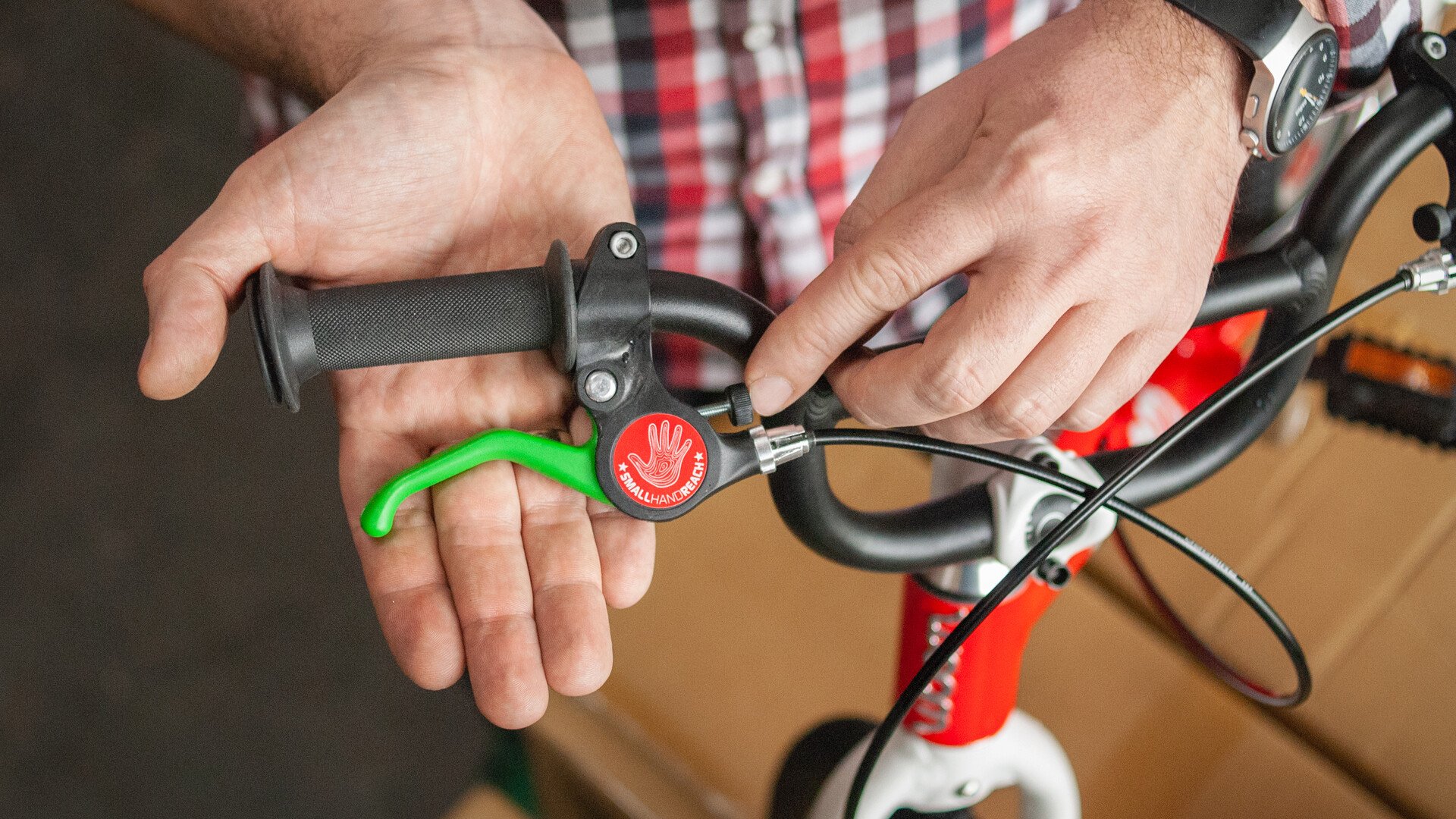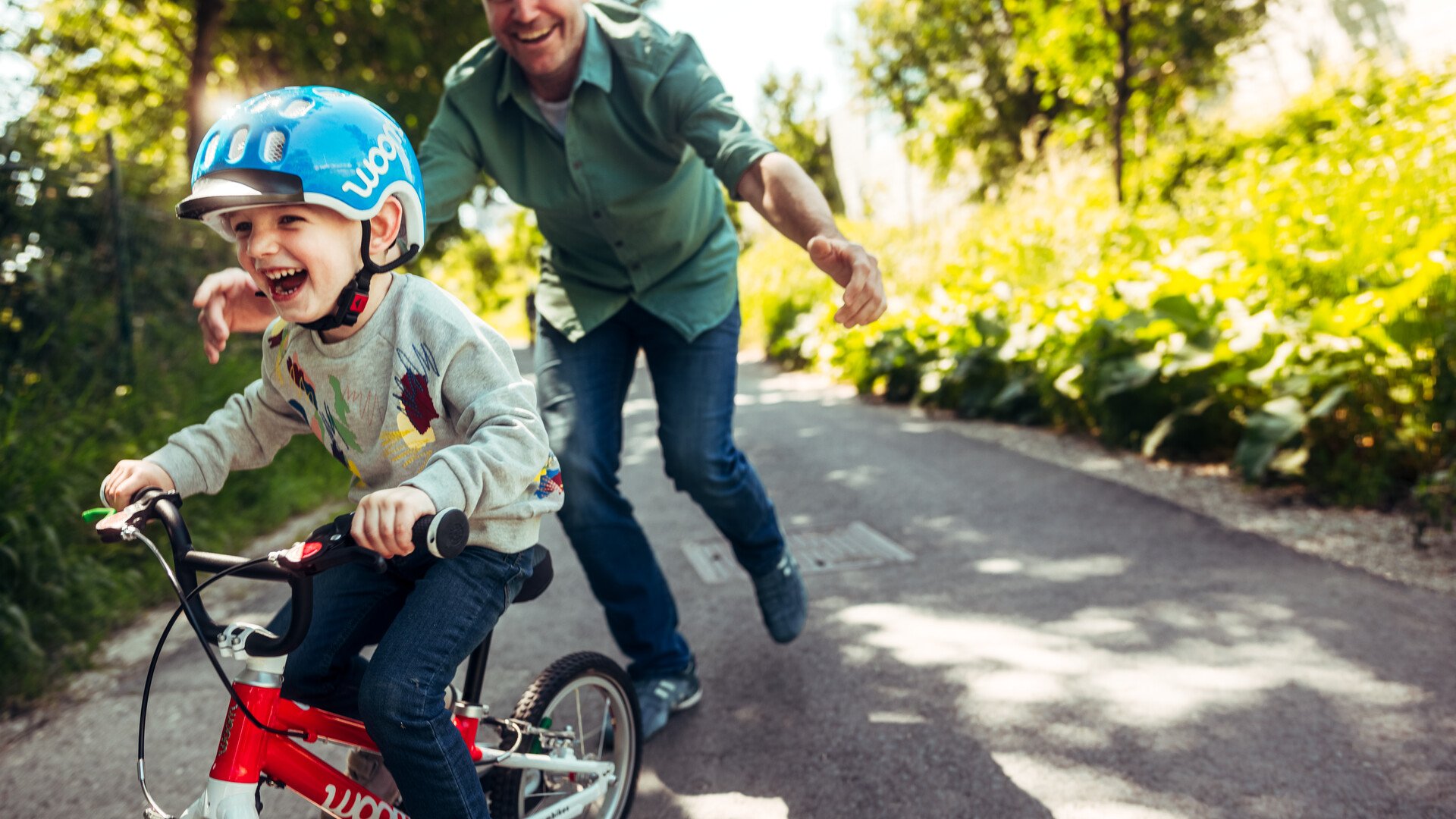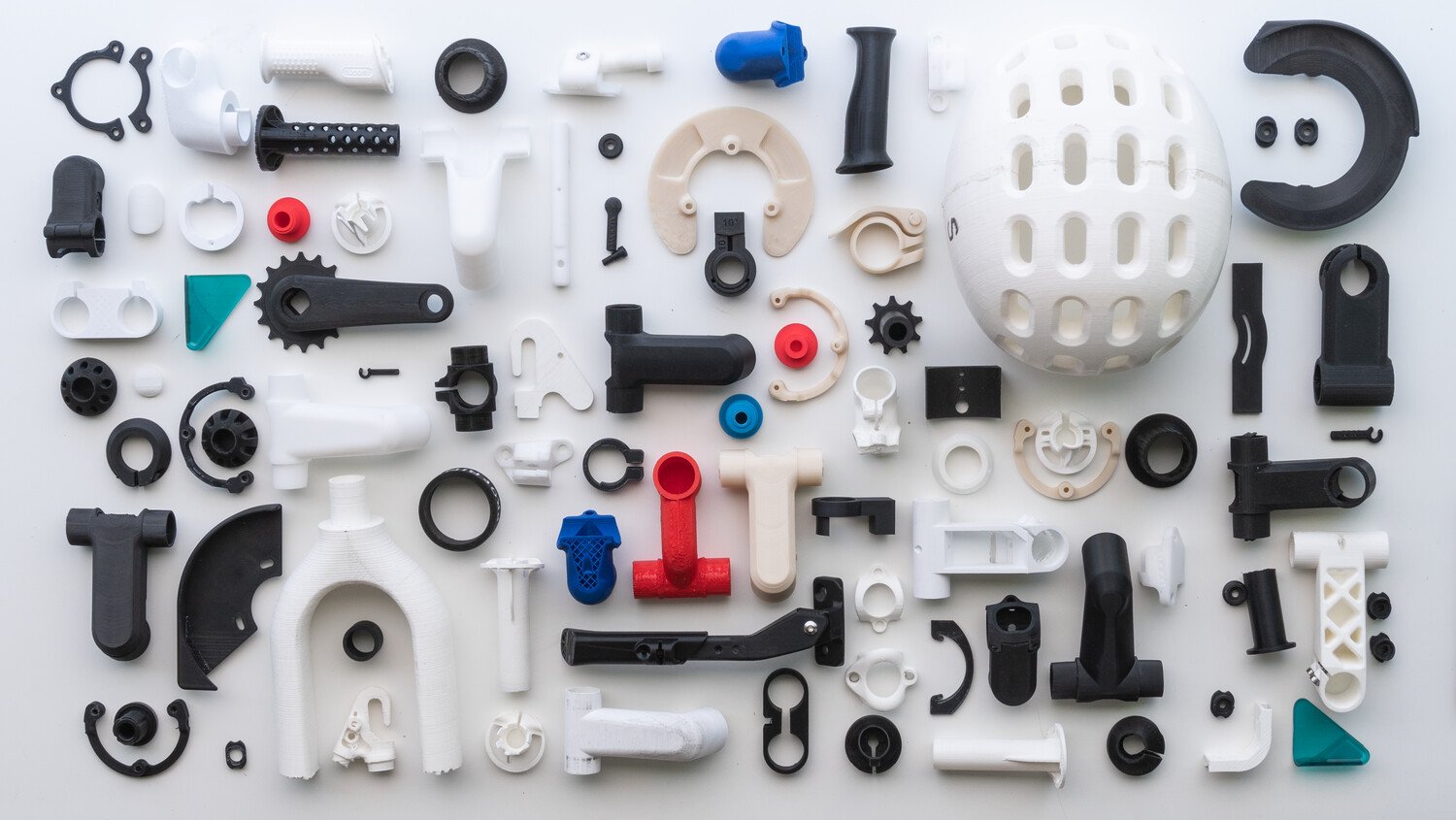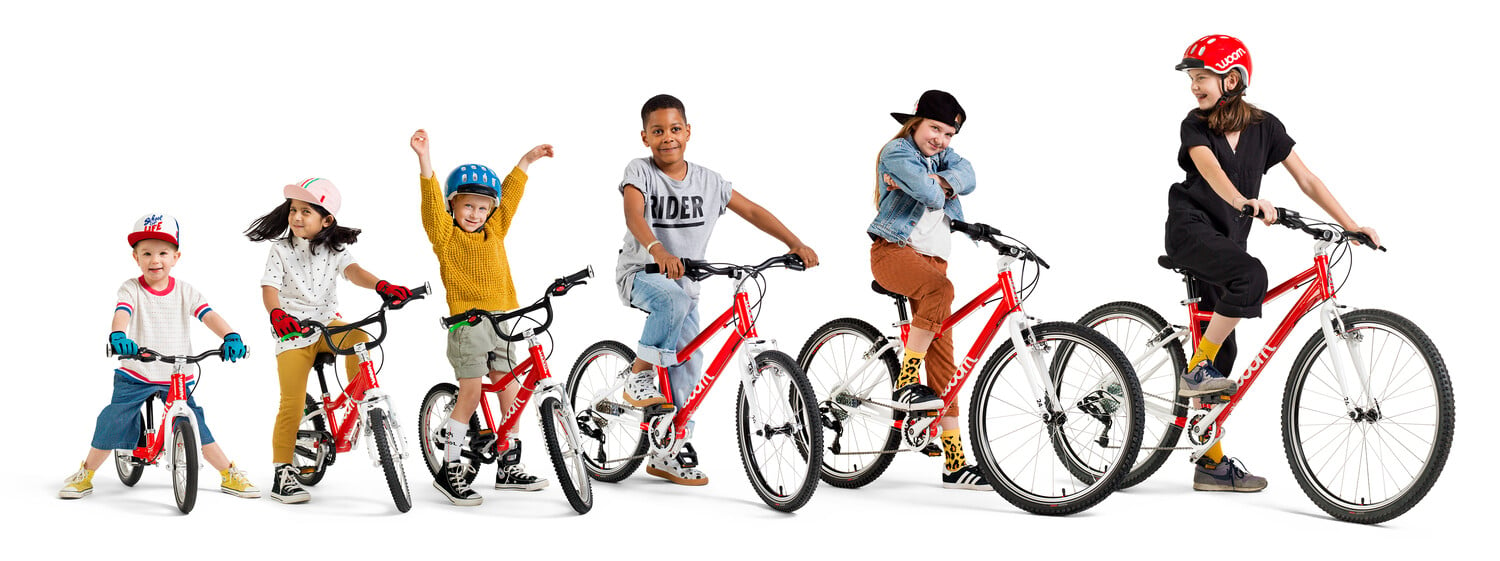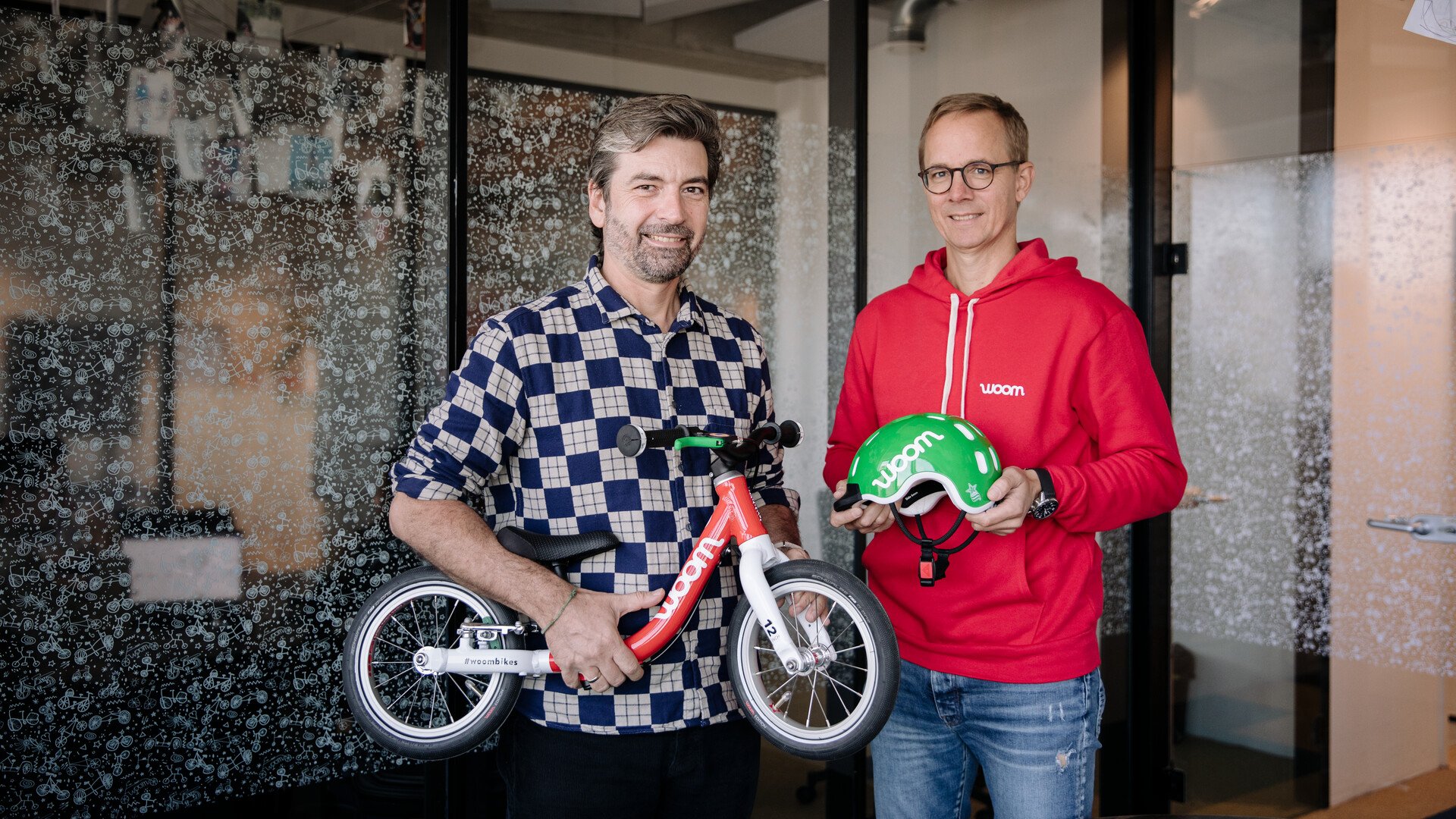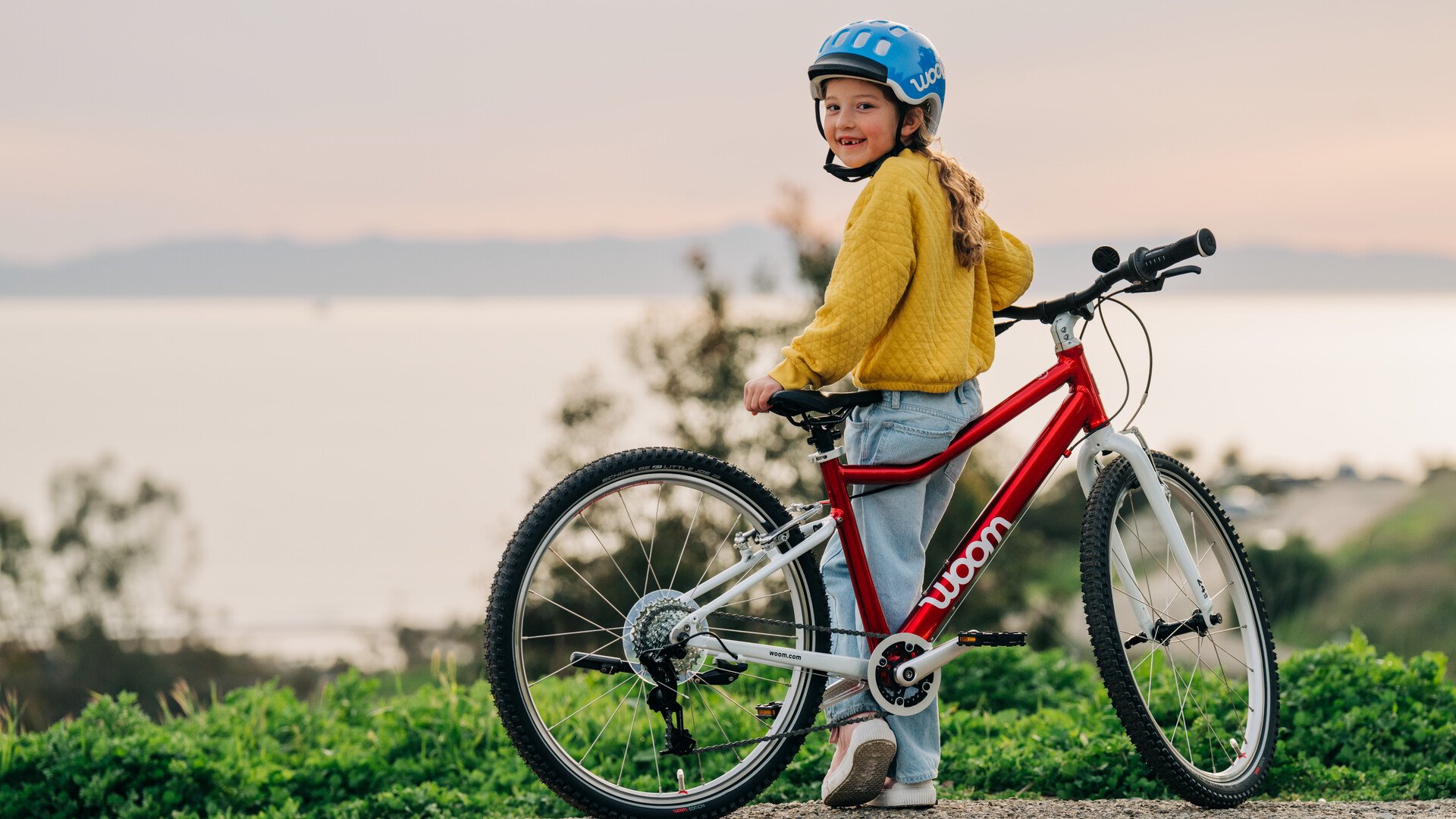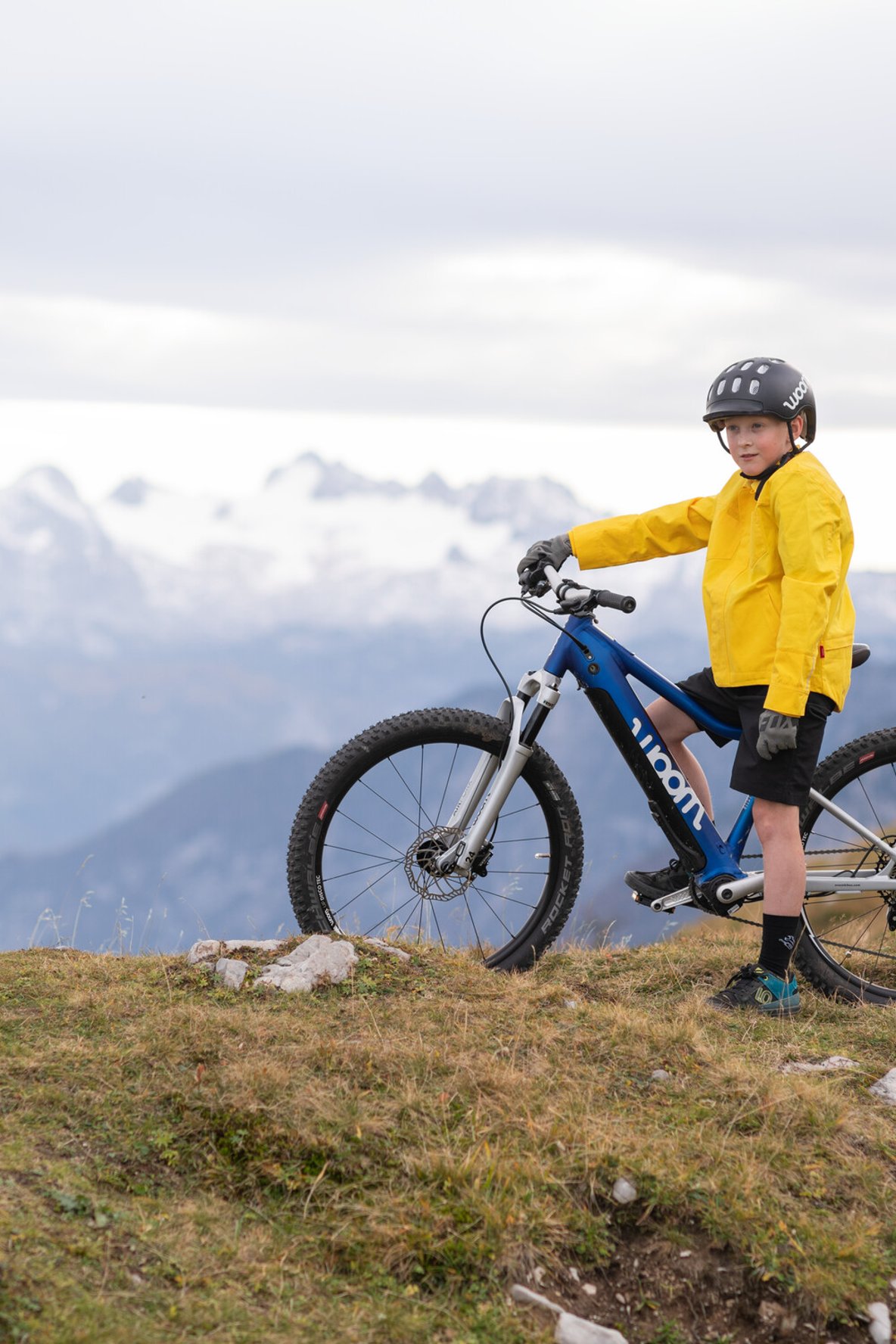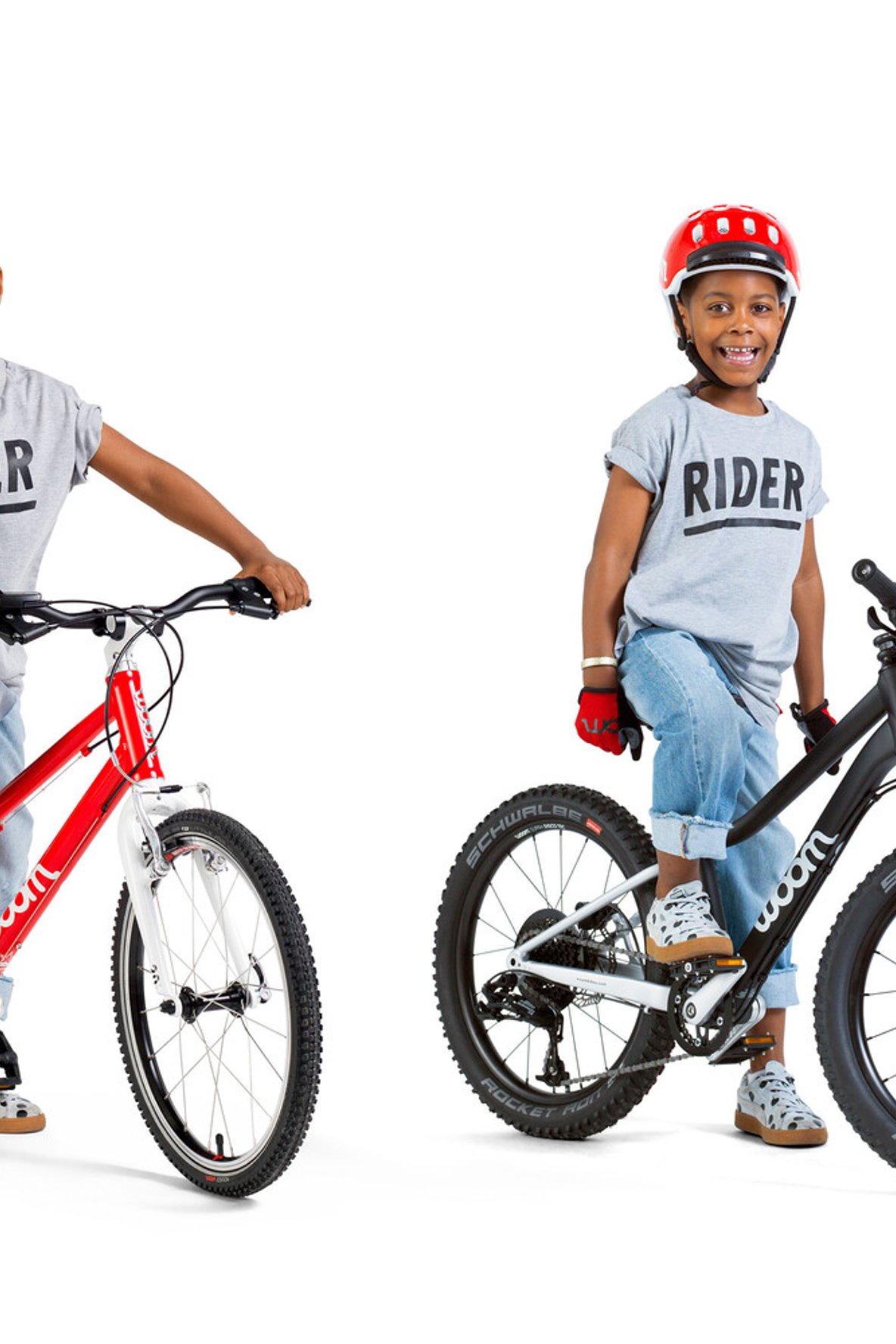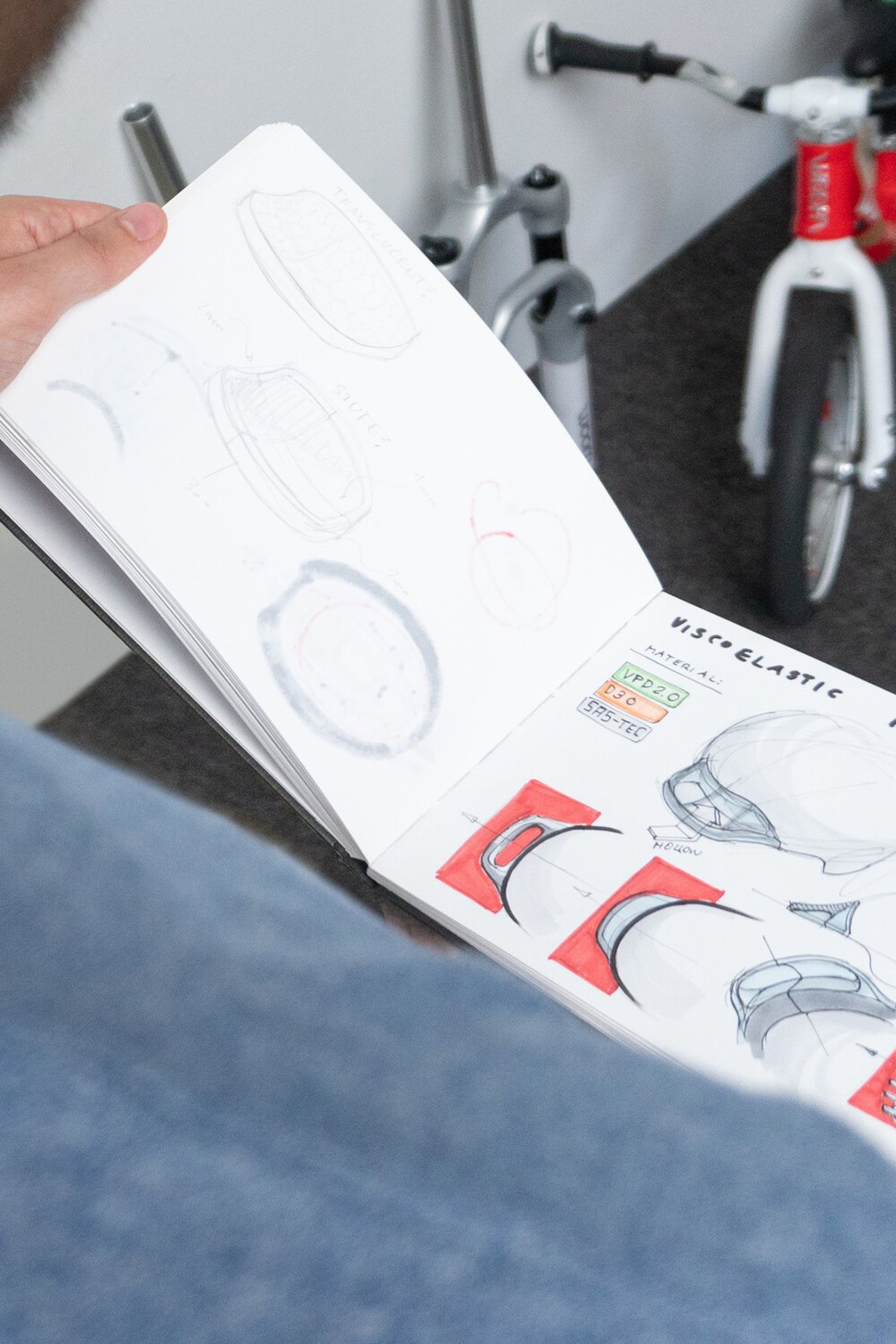And woom there it was! – the story of how two bike-mad dads reinvented the children's bike
woom is celebrating ten years in business in March 2023. A lot has happened in those ten years and woom has gone from a tiny start-up in a garage to a global player. But how did it all begin? Ever wondered where the name woom came from? And what makes woom bikes so special? Join us on a journey back in time to when woom was first established and learn everything you need to know about the company and its two founders.

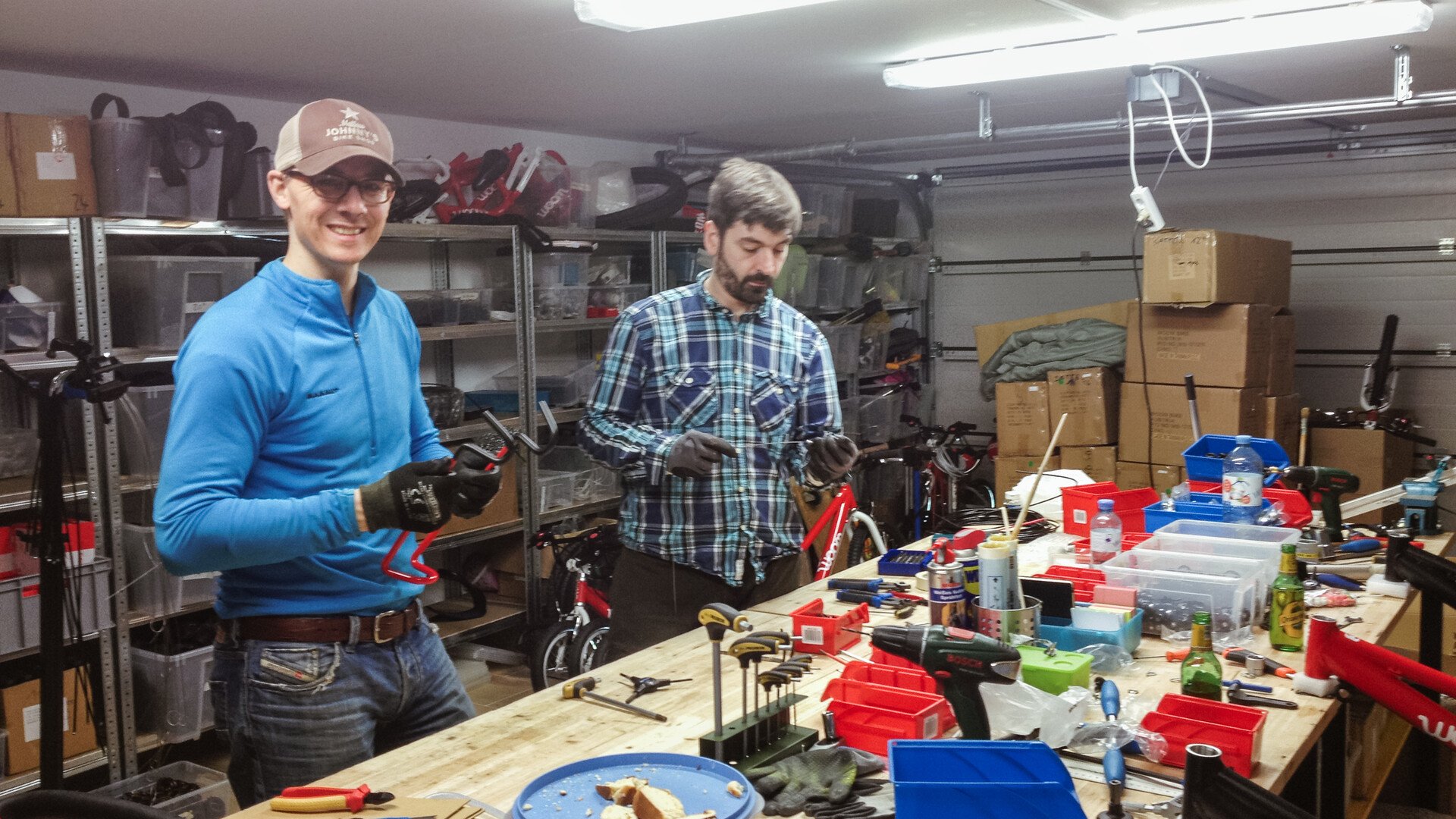
Marcus Ihlenfeld (left) and Christian Bezdeka (right) assembled the first thousand or so woom bikes in Marcus' garage.
It all started with a failed attempt to find a decent children's bike. And a big idea.
The woom story actually started a few years before the company was officially registered in March 2013. It was 2011, to be precise. That was when industrial designer Christian Bezdeka and marketing manager Marcus Ihlenfeld first met through a professional project.
They were both keen cyclists and fathers to two small children. It didn't take long for them to get chatting about their love of bikes. Christian had already been toying with the idea of building a bike for his own children because he had been struggling to find one he was happy with for some time.
When Christian told Marcus about his idea, he was buzzing with excitement. It turned out that he'd been having the same problem. All the children's bikes on the market were either just smaller versions of adult bikes made with standard components that weren't designed for kids or awkward, clunky things made of steel that were just too heavy and cumbersome for kids.
Besides the excess weight and disregard for ergonomics, there were some other serious deal-breakers. Safety was one of the major issues. At the time, all the bikes aimed at children learning to ride came with coaster brakes.
They make it really difficult to brake evenly and the pedals have to be at the right angle for braking to be at all possible in the first place. With a >> coaster brake, kids aren't always able to brake in time, hard enough or at all in the worst case scenario.
Stabilisers were still big back then too even though they >> make it much harder for children to develop a good sense of balance when they're learning to ride a bike. "We soon worked out that stabilisers taught kids bad habits," says Marcus. "Once the stabilisers are gone, they have to forget everything they've learnt and start again from scratch."
Children are not just mini adults – they have different needs when cycling
Marcus and Christian have always believed that a love of cycling comes down to a child's first experiences on a bike. So they knew that they had to spark their children's enthusiasm with their very first bikes. Then it wouldn't be long before they could share their favourite hobby with them too. But they needed a bike that would be easy for their kids to handle and fun for them to ride, with comfort and safety guaranteed.
They decided to take matters into their own hands and leave no stone unturned. They worked long and hard on every single component to get it just right for a children's bike and thought about everything... >> the weight, the materials, the design, >> the frame geometry, the handlebars, >> the cranks, >> the handlebar grips, >> the saddle, >> the brakes, >> the wheels and the tyres.
"Children are not just mini adults. They have a different build and proportions. And their needs are different too," explains Christian. "And we've designed our bikes to respond to these needs, which are forever changing as children grow and develop."
Just think about children who are learning to ride a bike. >> Safety is a huge priority for them. They need to feel comfortable and confident in the saddle. Turning corners isn't an issue for them because they just want to travel in a straight line to begin with.
In these early days, children need a bike with a low centre of gravity, a smooth ride and forgiving front-end geometry. Low entry also makes it as easy as possible for young children to get on and off their bike and lets them get their feet back on the ground quickly when needed.
How the idea of a child-friendly bike became reality
Christian originally set out to build a few decent bikes for his son. As an industrial designer working with bikes, he had useful contacts in the industry and in manufacturing. But once people he knew started to get wind of his idea, they asked him to make bikes for their children too.
And then came Marcus and his big ambitions.
Christian's background in biomedical engineering served him well as he collated all kinds of statistical measurement data on children's body sizes and proportions. And the two founders measured child upon child at the schools and nurseries their own kids went to.
Christian used all this data to match the first prototypes precisely to the anatomy of children at different ages and to bring his ideas to life in 3D designs on the computer screen.
And this new children's bike already had a name. Christian loved hearing the noises his own children made when they were copying a car speeding past. Vooooom, vooooom!
His experience in the bike industry had taught him a lot. He'd once seen one unfortunate bike manufacturer's name printed upside down on a whole run of bike frames, making it impossible to read.
The two founders didn't want to risk anything like that happening to them. So they decided to make sure their name was easy to read and instantly recognisable all ways up. That's how they settled on the ambigram woom and the font they'd use in the logo.
It wasn't until 2012 that the two founders built their first batch of around 40 bikes in Marcus' garage in Vienna. And they'd sold out by the very next day. That was the push they needed to keep making more.
And so they set to work, fine-tuning and perfecting their design until they mass-produced the first woom ORIGINAL bikes in 2013 and started selling them on the market. These bikes were up to 40% lighter than conventional children's bikes and they featured child-friendly components, almost all of which had been designed by Christian and Marcus themselves.
"It was a crazy time," says Marcus. "In those two years, we worked five or six evenings a week. Once we'd done a day's work in our other jobs and put the kids to bed, we'd meet up to work on our plans and designs."
The pair spent their weekends and holidays together in Marcus' garage or at bike trade fairs on the hunt for the best materials and suppliers for their children's bike.
The two of them finally signed their articles of association on 12 March 2013. And they officially registered their new company a few days after that.
During their first year in business, they sold 287 woom bikes out of the garage and taught some 200 kids how to ride a bike on the street in front of it.
A clever sizing system so woom bikes grow with kids
Beyond the anatomy and motor skills, there's another fundamental difference between children and adults... Children are still growing. And they sure do grow fast.
Marcus and Christian knew >> how important it is for children to always ride a bike that's the right size for them. And so they didn't just stop at one bike in one size. Instead, they developed a >> clever sizing system with two balance bikes and five pedal bikes for children aged between 18 months and 14 years.
Kids can transition smoothly from one bike to the next one up. And parents can rest assured that their child's new, bigger bike will be perfect for their anatomy, cycling ability and requirements, picking up right where their smaller bike left off.
There's no money in children's bikes... Or is there?
By introducing this sizing system, the two founders gave woom a special USP that would also provide the start-up with some financial stability. After all, the profit margin on children's bikes is low. Basically, it's hard to make much money from selling a single children's bike.
That's why the bike industry had shown zero interest in children's bikes before this point. They were too niche and not profitable enough.
But Marcus and Christian thought outside the box. How about if they could make their premium children's bikes designed just for children so good that children and parents loved them so much that they became loyal customers who would always buy their children's bikes from woom?
On that basis, they adopted >> premium quality and outstanding customer service as key pillars of their business from the very beginning. They were sure that this was the only business model that would work for children's bikes.
No salary, a crazy decision and two strong women
Just a few months after setting up woom, the two founders gave up their day jobs and started putting all their energy into their new start-up. Marcus smiles as he remembers how some people he worked with reacted to him quitting his job. They'd tell him: "You're crazy throwing your career away like that".
But all that mattered to the pair of them was what their families thought. And they were right behind them, fully supportive of their plans. The childcare arrangements were rejigged and both the founders' wives went back to work full time to bring in a salary while Christian and Marcus absorbed the losses they knew would be coming for a few years and financed woom with bank and private loans.
"We went to Eurobike, the biggest bike trade fair in the world, year after year and we never booked a hotel. We'd just sleep in the car or pitch a tent in the car park. That was just how we rolled back then," they both say with a smile.
Even though it was hard to break into the bike business in the beginning, they never let go of their vision of a better children's bike. They wanted to give their "baby" the time it needed to grow and they planned to reap the rewards one day in the future. And their gamble paid off.
From a small garage in Vienna out into the big wide world
woom bikes were in high demand. By 2016, woom bikes were already available in ten countries, including the USA. In fact, it wasn't long after the company was established in Austria that it made its way to the States.
Marcus had sent one of the first >> woom balance bikes to his one-year-old nephew in the USA in 2013 – much to the delight of his brother Mathias (who had carried on living there after finishing his studies). He was so excited because there was no other children's bike like it on the US market. And so Mathias Ihlenfeld went on to set up woom USA in Texas in 2014.
By 2018, over 80,000 woom bikes had been sold, and our >> woom ORIGINAL bike and our >> KIDS' Helmet won >> numerous awards that year, including the Red Dot Award, the German Design Award, the iF Design Award and the Good Design Award.
In 2021, ten years after the first spark of an idea in that little garage, woom bikes were available in more than 30 countries around the world and the 500,000th woom bike rolled off the production line. It was >> put on display at the Vienna Museum of Science and Technology. The >> Museum of Applied Arts (MAK) in Vienna also added the woom ORIGINAL range to its Design Collection.
woom founder Christian Bezdeka personally took the 500,000th woom bike to the Vienna Museum of Science and Technology (TMW) on his cargo bike.
It comes as no surprise that woom moved out of Marcus' garage a long while ago. The company is now based in Vienna, just a 20-minute bike ride away from the city centre.
Ten years of woom, one million woom bikes and a very special woom ORIGINAL edition
Let's bring our story back to the middle of March 2023. Exactly ten years after woom was officially registered and almost a million woom bikes later, the company's garage days are long behind them. You can take the company out of the garage, but you can't take the garage out of the company.
woom has always stayed true to its roots, with our commitment to innovation, the highest of quality standards and our mission to get kids excited about cycling as strong now as it has ever been.
We're celebrating our special business birthday by releasing a limited edition of our woom ORIGINAL bikes in an exclusive metallic colour called anniversary red. The first-ever woom bikes were in original red and that's still the colour our customers love most.
Red is also associated with love – and a love of cycling is at the very heart of our woom bikes. Plus, red has been our brand colour since the very beginning. We couldn't think of a better colour for our Anniversary Edition than one that takes us back to the very start of the woom story.

